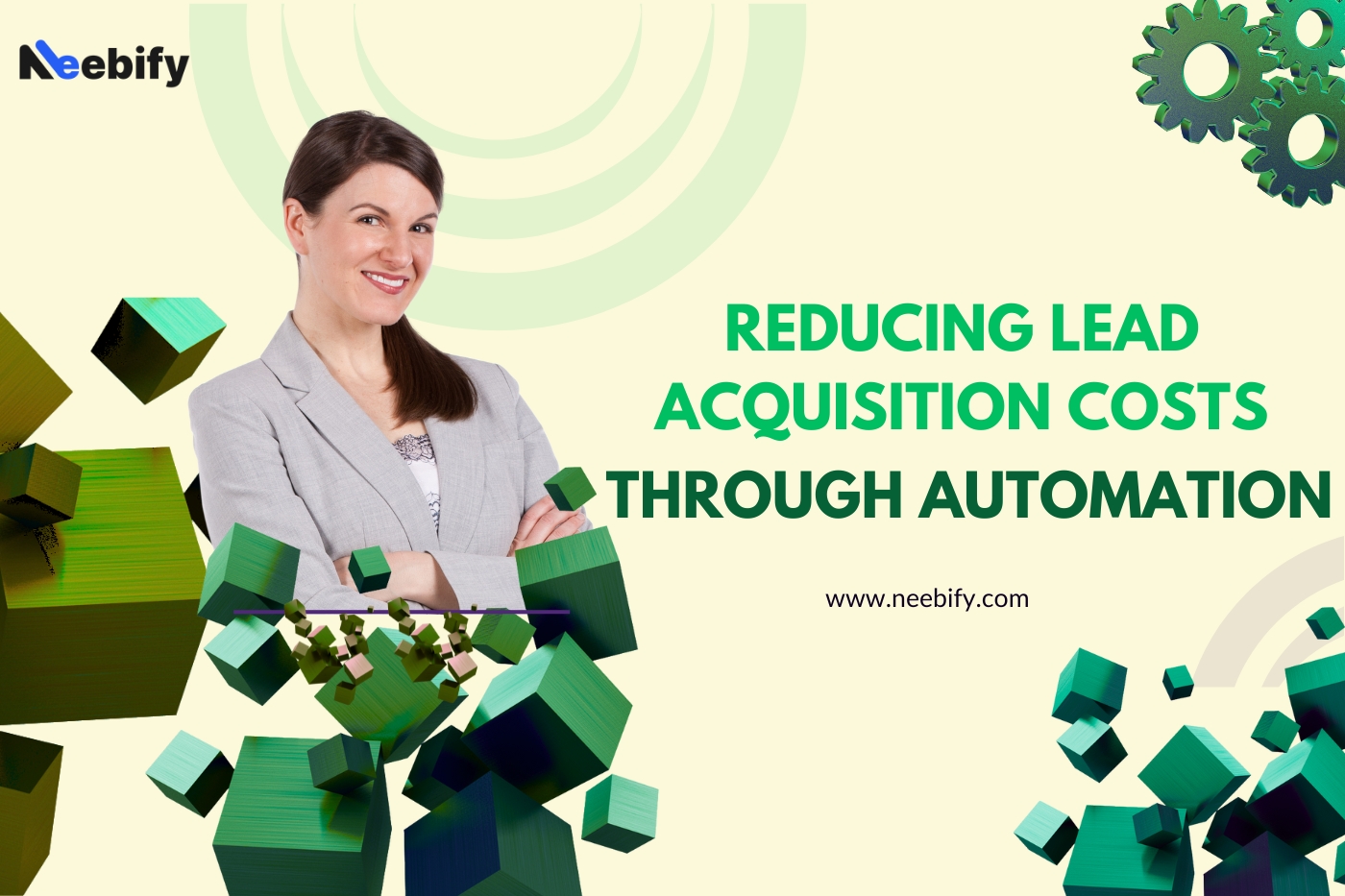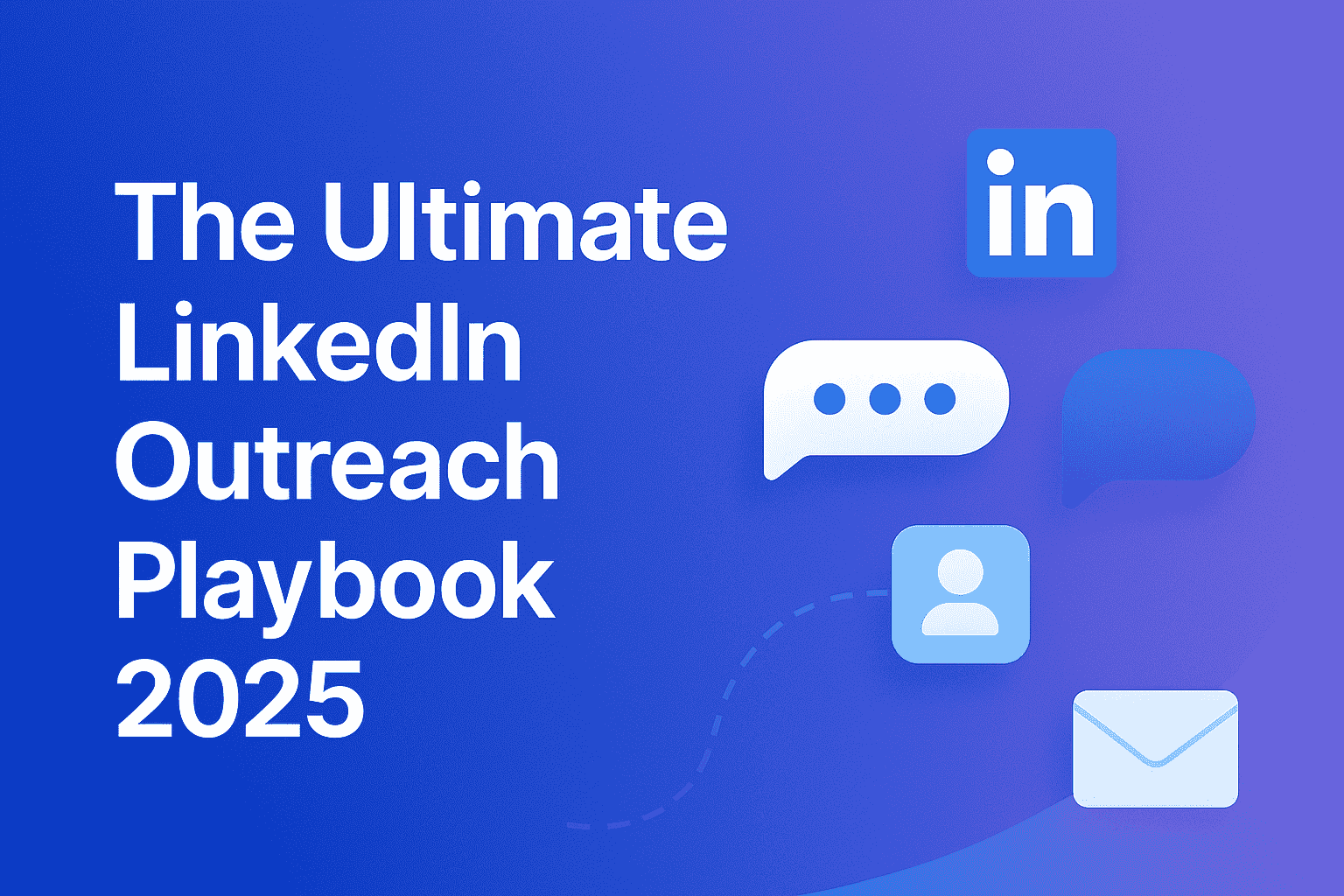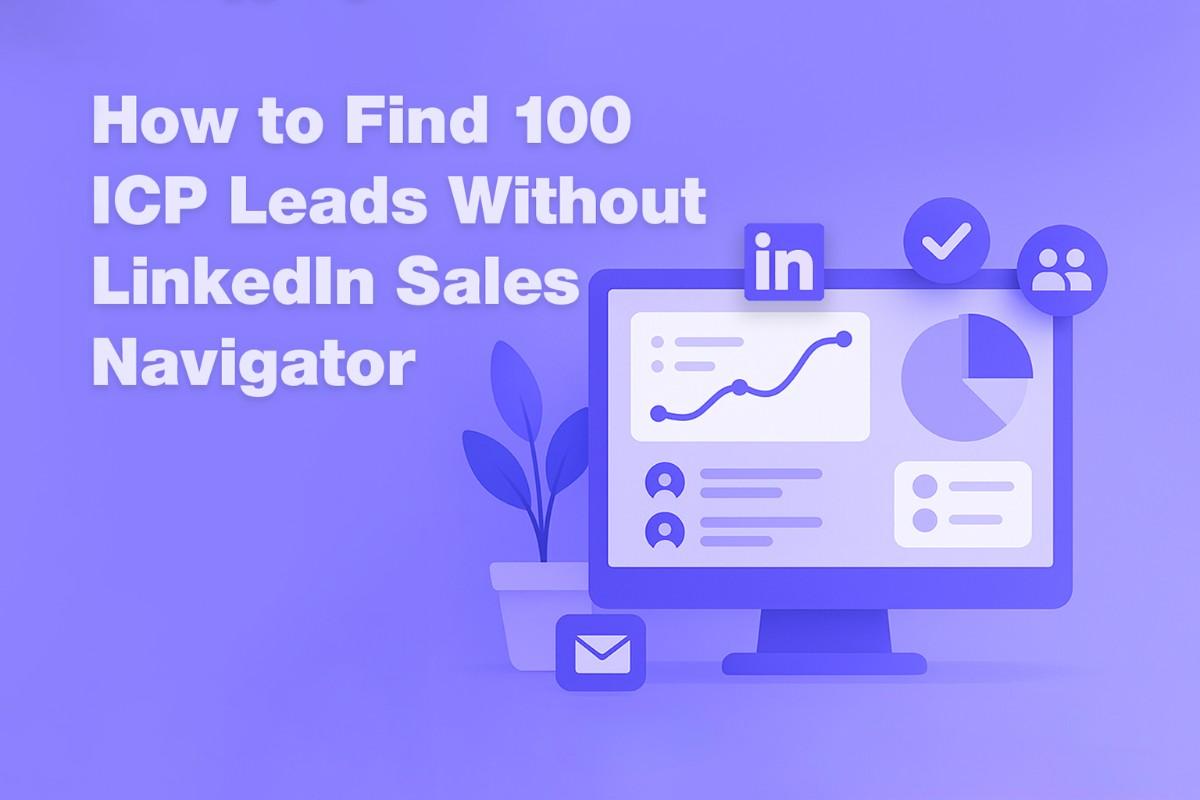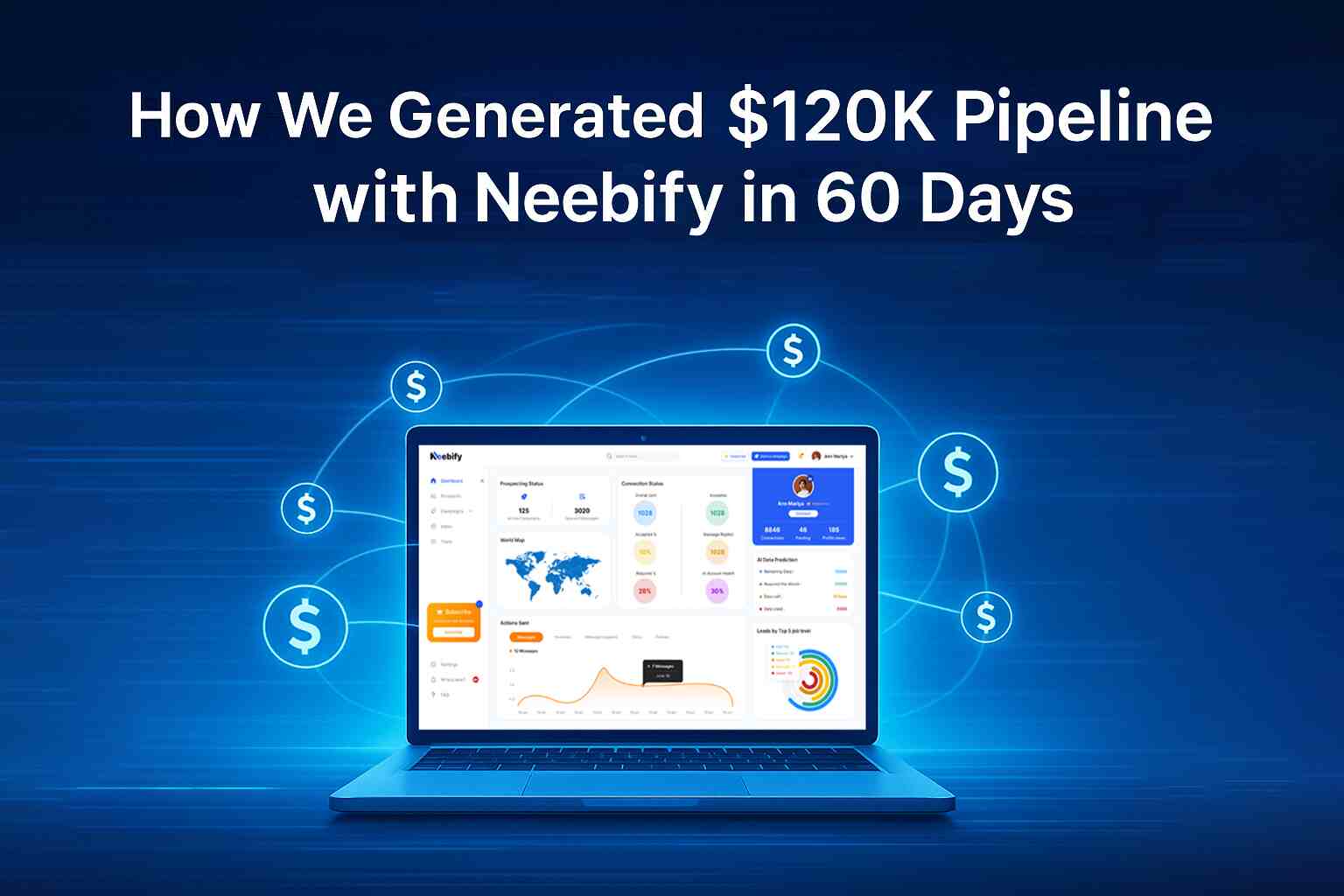Table of content
What is Lead Acquisition Cost Through Automation?
Lead Acquisition Cost is an important metric that determines the cost for a business to acquire new leads. It involves all costs that pertain to marketing, technology, personnel, and other resources used in the process of acquiring and converting potential customers. Conducted manually, the above-mentioned ways are usually very expensive due to their time-consuming nature, such as cold calling, email outreach, and offline advertising. Anyhow, automation completely overtook that process using technology that managed and smoothed the lead-generating activity.
Lead Acquisition Cost through Automation: This is the cost of acquiring leads using automated tools and technologies. Automation tools use advanced algorithms, AI, and machine learning to identify, nurture, and convert leads more precisely. Automation tools also help organizations reduce human interference and repetitive tasks, which brings down the overall cost by automating various tasks related to email campaigns, social media marketing, and CRM.
Key Components of Lead Acquisition Cost through Automation:
1. Marketing Automation Tools: The role of HubSpot, Marketo, and Pardot comes into prominence while automating marketing tasks such as email campaigns, social media posts, and lead scoring. They reduce the amount of manual effort spent on such tasks; hence, they also reduce their cost.
2. CRM Systems: CRMs, such as Salesforce and Zoho, manage and track interactions with leads while automating follow-up activities, thus reducing the cost of managing leads manually.
3. Data Analytics and AI Algorithms: Advanced tools using data analytics and AI predict customer behavior, segment audiences, and personalize marketing efforts. It is a fact that this targeted approach could bring down the cost of lead generation manifold.
4. Chatbots and Automated Customer Service: Chatbots help engage potential customers 24/7, answer queries, and even guide them through the sales funnel, reducing the need for human intervention and thereby lowering acquisition costs.
How to Reduce Lead Acquisition Costs Through Automation?
Reducing lead acquisition costs through automation involves a strategy or tool for improving efficiency, cutting down redundant processes, and optimizing marketing efforts. Practical ways to achieve this include:
1. Leverage AI and Machine Learning
AI and algorithms of machine learning analyze vast chunks of data to see through patterns and trends. This enables the business to target the right audience with personalized messages, decreasing ineffective campaigns that drive costs up. With the predictive nature of a machine learning model, one can tell which lead is more likely to convert, and hence, the business focuses resources only on high-potential leads, reducing acquisition costs.
2. Automated Lead Scoring
Automatic lead scoring depends on algorithms that grade the probability of a lead turning into a customer. These algorithms are pegged to some predefined criteria, such as demographic data, online behavior, and level of engagement. Businesses will give priority to leads that are more likely to convert, making them efficient while reducing the overall cost per lead.
3. Marketing Automation Platforms
With marketing automation platforms such as HubSpot or Marketo, businesses can automate mundane activities like sending follow-up emails, scheduling social media posts, and managing ad campaigns. It will reduce the time and labor involved to perform this activity manually, hence reducing the cost. In addition to that, analytics and insights provided through automation platforms will help businesses further optimize their marketing strategies.
4. Automate and Optimize Content Marketing
Content marketing is expensive, especially when done manually. In any case, for content distribution, analytics of engagement metrics, and real-time adjustment of content strategies, automation software can help. This would ensure that the right content is served to the right audience at the right time to ensure maximum ROI and minimum acquisition costs.
5. Deploy Chatbots for Initial Lead Engagement
They can manage the initial interaction of customers, frequently asked questions, and walk the prospect leads through the sales funnel. Therefore, this would reduce the need for human agents to handle queries that are very much repetitive, adding to labor costs. Chatbots run 24/7, making sure no lead is ever missed; hence, optimizing the process of lead acquisition.
6. Automate Social Media Marketing
Automating social media with Hootsuite or Buffer will provide features for scheduling posts, monitoring engagement, and analyzing key performance metrics. It saves time and resources while you keep your target in social media marketing consistent. Automated social media tools will also provide data-driven insights to refine and optimize such campaigns for lower lead acquisition costs.
7. Streamline Lead Nurturing with Drip Campaigns
Drip campaigns can be understood as automated sets of emails that are sent out at regular intervals, which are initially defined by user behavior or other forms of predefined triggers. This helps nurture leads by providing timely information relevant to stages in which buyers are standing. Automated drip campaigns reduce the cost of manual follow-ups and increase the chances of conversion.
8. Use Data Analytics to enable Targeted Marketing
Data analytics tools give insights into the target audience based on the analysis of customer data, behavior, and preference. Using this information, businesses can run highly targeted marketing campaigns that have a far better scope of converting leads. Since this is focused, it also cuts the cost of acquiring leads due to minimal wasted efforts on prospects showing less interest.
Importance of Reducing Lead Acquisition Costs Through Automation:
There are many critical reasons for reductions in lead acquisition costs via automation.
1. Higher ROI
Automation reduces manual effort, smoothen processes, and allows a business to focus its resources on leads that demonstrate high potential. This, in turn, improves the conversion rate and provides a higher return on investment or ROI. Automation cuts down the cost of lead acquisition to ensure that every dollar spent on marketing is put to good use.
2. Scalability and Growth
The larger the scale of operation, the more cumbersome and costly the manual handling of leads becomes for a business. Automation, therefore, enables enterprises to scale up their operations in handling a larger volume of leads without necessarily increasing costs proportionately. Scalability is an important aspect for any firm looking to increase its market reach and customer base with relatively lower acquisition costs.
3. Better Quality Leads
Data-driven methods means automation tools target better quality leads that are most likely to convert. The focused approach cuts down the cost of acquisition by filtering out low-quality leads that are unlikely to yield sales. The quality in the leads, therefore, will be more valuable in terms of engagement and cycle.
4. Increased Efficiency and Productivity
The automation tools speed up the process of generating leads by making it repeatable, and this washes out any human error. In this way, it enhances the efficiency of the whole marketing team, who are thus able to be more useful with strategic activities. By saving hours wasted in mundane tasks, a business gets to save on some labor costs and be more productive.
5. Improved Customer Experience
Automation tools like chatbots and personalization campaigns enhance customer experience through the delivery of timely, relevant information at all times. A superior customer experience means satisfaction, trust, and loyalty go up, along with the likelihood to convert. Reduced acquisition costs make it easier to give them an improved customer experience that leads to sustainable growth.
6. Real-Time Data and Insights
Automation tools give real-time data and insights into how marketing campaigns work. This allows businesses to instantly know what works and what does not and to adjust the strategies accordingly. In addition, it reduces time and cost associated with 'hit and trial' and assures that marketing effort is focused only on channels and tactics that yield the best results.
7. Competitive Advantage
Automation reduces the lead acquisition cost and, therefore, provides a business with competitive advantage sustainability. Lower costs imply that a business is capable of investing more in other growth areas, such as product development or customer retention strategies. This flexibility gives the business an edge over its competitors, who are relying on less effective methods.
Conclusion
One of the most important factors in trying to grow a customer base for a business is by comparing and ascertaining the cost of lead acquisition. Automation seems to be a strong approach or means of having low costs since it streamlines the process, enhances efficiency, and allows targeted marketing. Quite a number of strategies can be useful in lowering the cost of acquiring leads by automation-from AI and machine learning to deploying chatbots and using data analytics.
It cannot be emphasized just how important it is to reduce lead acquisition costs through automation. It pays with a higher ROI, scalability, improved quality of leads, an improved customer experience, and a durable competitive advantage. Automation will not only cut costs for companies but will also yield a strategic competitive advantage in the long term in a highly competitive market.
Get your next meeting in a
matter of minutes.
Free Trial
Latest
The Ultimate LinkedIn Outreach Playbook 2025
A practical, modern guide to mastering LinkedIn outreach in 2025 — learn how to boost reply rates, p
12/1/2025How to Find 100 ICP Leads Without LinkedIn Sales Navigator
Generating 100 targeted ICP leads doesn’t require LinkedIn Sales Navigator. Learn how to leverage fr
11/28/2025


